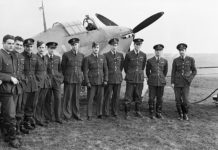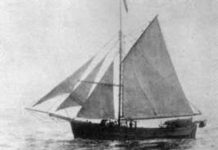It wasn’t exactly an extravaganza of music, colour and festivity. On December 2, 1905 the first Toronto Santa Claus parade featured a singular man in costume. No big floats or marching band, just a fellow in a nifty suit. Arriving at the Union Station in the city’s downtown, Santa Claus was met by the Eaton’s family and escorted to the T. Eaton & Company store. That first march blossomed into the world’s longest-running children’s parade, beloved and going strong 105 years later.
Toronto Santa Claus Parade with Live Reindeer
Eyes were captivated by the first stroll up the street to Eaton’s, the store the sponsor of the parade for 77 years to come. Over the next few years, trumpeters, a horse-drawn carriage and footmen were included. By 1913, Santa made children’s hearts soar when they saw his sleigh pulled by eight reindeer. The reindeer were brought to Toronto from Labrador for the parade. Veterinarians came along to care for the animals. Seven floats cruised the parade route in 1917 featuring nursery rhyme characters including the soon-to-be-traditional Mother Goose. “The biggest float that year was a giant swan carrying a band of musicians and clowns, with Santa in the centre of it all,” said The Santa Claus Parade – “Story of the Parade.”
Eaton’s Created “Punkinhead,” Santa’s helper
Santa Claus made a thrilling debut at the 1919 parade site, landing in a small plane at a long-gone aerodrome on Eglinton Avenue, a feat that cannot even be thought of on today’s busy street. As the years passed, the parade and number of fans expanded. During World War Two, concessions in resources had to be made – costumes normally made of fabrics were constructed of paper instead, since such materials were in short supply. The Eaton’s company made a marketing addition to the parade after the war was over, creating “Punkinhead,” a sad little bear who was Santa’s helper. “Punkinhead” became an immensely popular mascot for over a decade, featured in annual colouring books, and on merchandise such as mittens, winter hats and watches. The endearing character was also featured in music albums and on television.
Christmas Parade on Television
In the early 1950s, “the procession is up to 13 large floats,” said City TV’s “The History of Toronto’s Santa Claus Parade,” and 20 smaller ones, along with at least 2,000 participants.” And viewers of the annual event were about to skyrocket… in 1952, the exhilarating Toronto Parade was broadcast on television for the first time.
Eaton’s Parade Sponsorship Ends
Hard economic times hit the Eaton’s store in 1982 and the retailer was forced to drop sponsorship of the beloved parade. Refusing to let the seasonal tradition die, a number of companies joined together to fund the annual march. A year later, “Celebrity Clowns” were introduced. With $1,000 donation, executives could march in the parade. Over 60 business people participated in the first year. Entering bankruptcy, Eaton’s unfortunately would never again sponsor the parade.
Millions Enjoy Toronto Santa Claus Parade
Millions of people around the world watch the Toronto Santa Claus Parade on television, an eagerly awaited introduction to the Christmas season. Thousands more line the streets of the large city to enjoy the thrum of the marching bands, the antics of the clowns, and the thrill of the magnificent Christmas floats. And in great anticipation, fans of all ages wait for a glimpse of the chubby white-bearded man in the red suit, shouting the familiar “Ho, ho, ho! Merry Christmas!”






